Text: Ralf Borlinghaus | Section: Articles by Artists
Strong Words
In themselves, words are symbols that regain their meaning through the reader. Here, the words are ascribed a specific meaning at the outset.
In the category Strong Words, the individual concept (for example Success and Freedom) provides the point of departure from which we seek a formative, pictorial interpretation. It attains resolution when, out of the abstract letters, a concrete image arises that interprets the meaning of the word in some possible manner.
Example 1: Success (Erfolg)
The series of letters creates an arch, on which an arrow is strung, ready to be shot off. The arch and the arrow are both formed by the letter E, the vanes through the letters r-f-o-l-g. The word image that arises depicts success as the result of action with a purpose.
Example 2: Freedom (Freiheit)
Freedom is interpreted as a bird rising into the air in flight. The wings and torso are formed by the series of letters f-r-e-i-h and h-e-i-t. Body and tail feathers are marked by three additional strokes. The flying bird is universally understood to stand symbolically for freedom.
City Symbols
Cities are like people. They have a face and a character. Many have a relatively generic face, while others are quite individual.
In these city symbols, the name is graphically associated with one or more particularities of the city in question. This comes about through the modification of certain letters and/or graphic augmentation. Anyone familiar with the town recognises it at once; the stranger becomes curious.
Example 3: Berlin
Berlin appears with its landmark, the Brandenburg Gate. Through the lettering B-e-r-l-i-n, the columns of the monument are represented; the right column, the architrave and quadriga are indicated by graphic augmentation.
Example 4: Stuttgart
In the case of Stuttgart, three subtle strokes through the extended letter t suffice to remind the viewer of the television tower as the city’s landmark.
Portraits
Every person has his or her own unique handwriting. Many leave behind their signature in time and history for all to see.
The portraits of outstanding personalities in political and economic life, art and religion permeate all boundaries between the various spheres of life. Either an individual letter becomes the graphic focal point around which the portrait comes about (Goethe), or all of the letters of the name are its formative elements (Marlene). At times the personality might be sketched by a single characteristic gesture or situation. Within this category, Word Art steps across the line which separates it from caricature or cartoon.
Example 5: Goethe
The letter G provides the framework for Goethe’s profile, based on Tischbein’s famous painting Goethe in der Campagna.
Example 6: Marlene
With Marlene Dietrich, all the letters are integrated into the portrait: while the face is fashioned from the letter a, the letters m, r-l-e-n-e form the collar. The hair falling down the sides is added by two wavy lines.
Political Art
The human being is a political animal. So is Word Art.
From the beginning, the written word was at the same time political. One need think only of the Codex Hammurabi as one of the earliest sources of writing in history. Politics is likewise inherent to Word Art. Through the combination of word and image, strong aesthetic statements can arise.
Example 7:
The Dignity of Man is Inalienable (Die Würde des Menschen ist unantastbar). The letters comprising Article 1 of the Basic Law of the Federal Republic of Germany in this graphic representation show, uppermost and in the distance, a group of tightly packed refugees on a life raft, indicated by a wavy line. In the water, there drift about individual refugee-letters between waves that grow larger and more threatening as they approach the viewer.
(Ver-)Dichtung (Poetically condensed)
What pleases our culinary taste applies likewise to poetry: the eye eats, or in this case, reads, together with us.
Example 8: Time and Tide (Zeit & Reim)
Like a sheet of water, the text trickles down before the eye and tranquilises the beholder: whatever one may think about time / one thing is sure / that it trickles away / that not too much time be wasted / here the rhymes are ended. (“was man über Zeit auch sinnt / eins steht fest / dass sie zerrinnt / dass nicht zuviel Zeit verschwände / sind die Reime hier zu Ende.”)
What is Word Art?
Prologue
In the beginning was the Word. Here it becomes Art.
The thought condenses to the word.
The digital word easily mutates into twittering.
Handwriting binds the word back to the person.
To write words by hand, we term the Art of Writing.
To give the word meaning through writing is Word Art.
Word Art as Hieroglyph
Before the human being described (wrote) the world, he drew or painted it, after which he abstracted the image to letters and finally to the printed word – a process which repeats itself in every human being right to the present day. From that point on, painting and writing go separate ways. And where image and text meet, the image either serves to illustrate the text or the text to describe the image.
Word Art, as I understand it, re-unites drawing and writing, inasmuch as it – now contrary to its original trend – creates the image out of letters and words. The result once more becomes the hieroglyph, the Word Image (for example Dolphin)
Example 9: Dolphin (Delphin)
Word Art as Composition
Written words turn into sentences and these ultimately to text. Written text finds its equivalent in music in the musical score. They have in common that they codify their content and require expert decoding that they may cause to resound again for those unacquainted with writing or music. We call this reciting, reading aloud, playing or singing. Those with the knowledge are able to understand or hear text or sheet music silently in their mind, without recourse to outer sounds. To illustrate musical notes in colour adds nothing of significance, so that text and music are generally written in black.
Overall in human culture, the technique of reading and writing is today more widespread than that of composition, despite the fact that the former is both more abstract and freer. In his score, the composer sets the musician exact guidelines and carefully notes how he would like to have his music played: beat, key and tempo, piano or forte, crescendo or decrescendo, not to speak of instrumentalisation. This kind of concrete interpretation in music we generally find only in the director’s notes of a playwright for performing his play.
Mostly text is far less definite, as compared to musical notation. The many different possibilities we have in writing text are rather illustrative. The meaning ascribed to it by the author does not become apparent by the layout of the text itself but rather from the context in which the writer places it. For example, the word “love” in itself, as it is written here, can mean a number of things: joy, passion, mourning, jealousy, loss, care… These meanings are interpreted by the reader in accordance with his mood immediate situation. Should the author wish to have the word understood in a particular way, he must surround it with additional words, so that the reader understands the word in this specific sense.
Love, expressed as a musical chord, guides the contextual associations of the hearer in the intended direction, so that he or she can react solely with either sympathy or dislike, should the passion in the music not accord with the feeling of sadness he is experiencing in the moment. In this lies the close association of Word Art with music. Word Art gives to the single word (for example: Love) through its connotation a concrete interpretation that the viewer is immediately able to associate with it, or respectively, a sound whose mood he can immediately sense. Tone and colour of the concept originate in the head, so that for Word Art, simple black and white may suffice.
Example 10: Love (Liebe)
Word Art as Protestantism
The visual arts were originally practised as craft and as divine service, the identity of the artist shrouded behind the work. During the Renaissance and the changeover from the Middle Ages to modern times, art emancipated itself from religion and rapidly became worldly. The emerging Middle Class, wishing to celebrate itself, in the absence of photography, commissioned the painter for portraits representing and documenting their status. It was not only through conquest, trade and science that modern Mankind made the world his own; also the artist, in the course of the following epochs, painted his way through and into our present time the culmination of our view of the world – passing through the Baroque, through Classicism, Romanticism, Realism, Impressionism, Expressionism, Cubism, Futurism, Surrealism, Postmodernism …
The relentless disempowerment of Church and Priesthood left a gap into which art positioned itself. Adoration of the Saint transformed itself into the cult around the Artist. Works of art are collected like holy relics and change hands at astronomical prices. Cathedrals and monstrances have transformed into museums and galleries, in which visitors devotedly wander in search of edification, only to be left mystified. For, like the decadence of the pre-Reformation Papacy, its promise of salvation is repeated in the current behavior of the art market. The Avant Garde long ago left behind the parish and has turned its back on it. It has become – though incomprehensible and crude, a mere hocus pocus celebrating its own individualism, demanding from the needy in search of art an obtuse faith rather than mature aesthetic participation. They speak to the illiterate in the same content that gives the educated something to think about for the rest of their lives.
In the face of this, Word Art is the protestant. It causes a thought to resound pictorially. It does not turn its back on the public but meets it as an equal. The reading viewer finds him or herself addressed aesthetically through a word or a sentence and reacts autonomously, with independent judgement and personal thoughts and feelings, with acceptance or rejection.
Example 11: Jesus
Word Art as Minimalism
Anything that can be written can become the object of Word Art. The entire spectrum of human reality, from cheerful to serious, superficial to profound, philosophical to political etc. can be portrayed through it. In doing so, Word Art is ever wakeful for that magic moment of intuition, in which the head, the heart and the stomach meet and can assist the concept, through writing and drawing, to find aesthetic expression. The actual process is reduced to a few strokes, so that only in the oscillation between thinking and perception on the part of both the producer and the recipient, the entire picture becomes manifest.
Example 12: Sex
Introduction by the Editor
Ralf Borlinghaus, the originator of Word Art, claims it is an art form in which word and art, Logos and aesthetics, knowledge and perception, enter into a symbiotic relationship with one another. Word Art demands that it be thoughtfully perceived or perceived thinkingly. How, in that case, does Word Art find its appropriate place in w/k?
In the domains Articles by Artists, Interviews, Articles about Artists and Art Theory this online journal focuses on the connection between Science and the visual arts whereby, in regard to the individuals involved, it differentiates between three forms: the border crosser between science and art, the science-related artist and the collaboration between at least one artist and one scientist. The editorial board, however, also permits presentations of borderline projects of other kinds.
Such a borderline project is Word Art: Borlinghaus’ aim is primarily to re-establish the innate connection between the written and the pictorial and to interpret this anew. In the context of that which w/k generally publishes as the connection between Science and the visual arts, one may here speak of a connection between literature and visual arts.
The works of Word Art shown in the following passage are all Graphics. They stem from Ralf Borlinghaus and may be viewed on www.wortkunst-grafik.de. As the pictures have been scanned, the usual note in w/k, “Foto: XY”, is absent.
The artist Ralf Borlinghaus sees himself as a spiritual scientist and artist – which might be viewed a playing field for a cross-border commuter. In the following w/k contribution, he introduces us to Project Word Art.
With currently about 230 graphics, Word Art has been around since 2013. They are presented on the website www.wortkunst-grafik.de in five categories.
Post-edit by the w/k editorial team: reflecting on the article
According to the claim of its author Ralf Borlinghaus, word art is an art form in which word and art, logos and aesthetics, knowledge and perception are symbiotically connected: Word art should and wants to be considered in reflectively. How can this project be positioned within w/k?
In the sections artist contributions, artist contributions, and interviews, the online journal focuses on connections between science and the visual arts, distinguishing three forms in relation to individuals: the border crosser, the science-related artist, and the cooperation between at least one scientist and at least one artist. At the margins of both areas the editors also allow presentations of other types of interface projects. Such an interface project is word art: Borlinghaus’s main concern is to link up with the original connection between the written and the pictorial and to reinterpret it. In relation to the connections between science and the visual arts, which are dealt with primarily in w/k, one can speak here of a connection between literature and the visual arts. The word artist Ralf Borlinghaus sees himself as a humanities scholar and artist – this can be understood as a special variety of the border crosser.
The word art works shown in the article are graphic works. They are all mady by Ralf Borlinghaus and are accessible on the artist’s website.
Image above text: Ralf Borlinghaus: Wortkunst (Word Art) (2013). Felt-tip pen on upright A3 Canson Paper.
How to cite this article
w/k-Redaktion (2019): Word Art: A New Art Form. w/k–Between Science & Art Journal. https://doi.org/10.55597/e3980
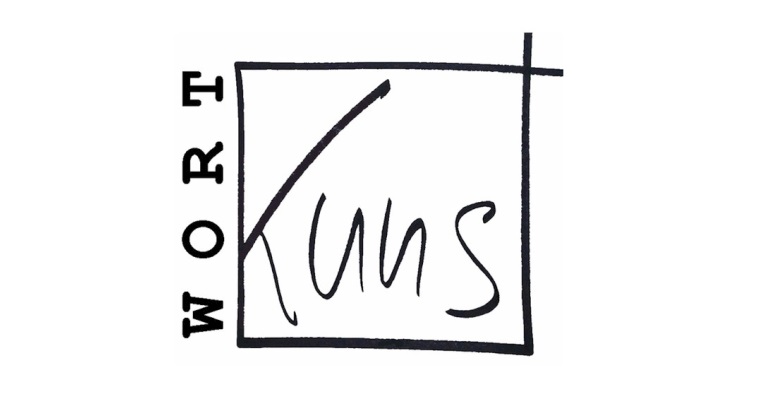
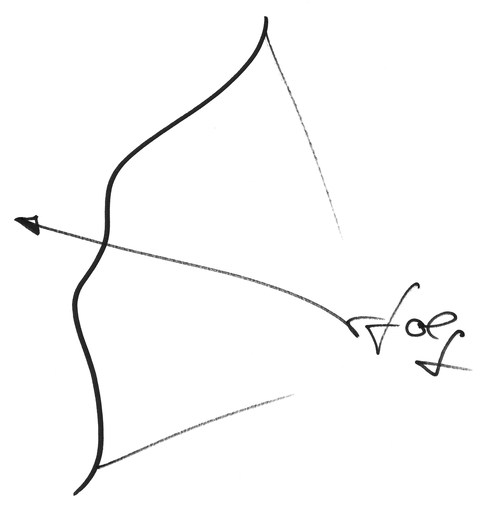
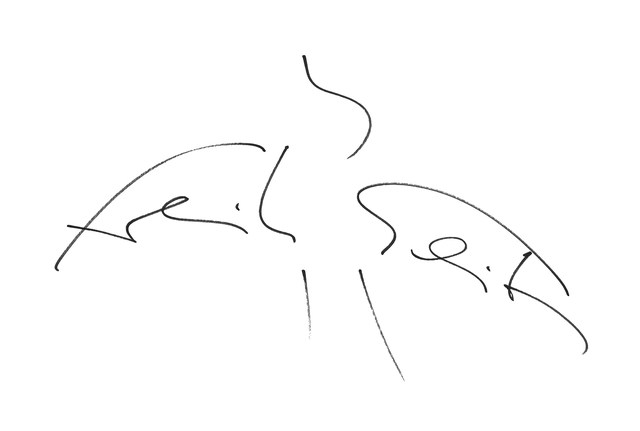
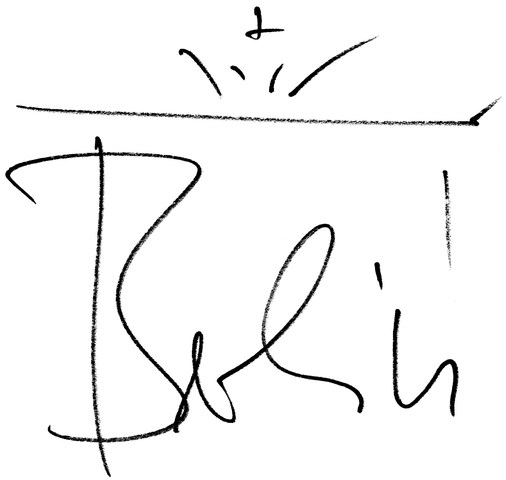
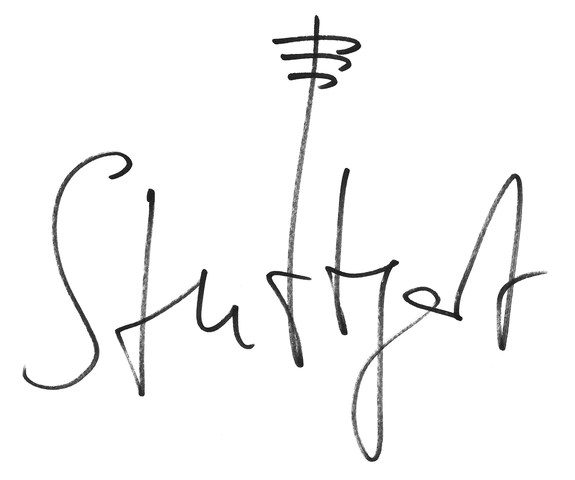
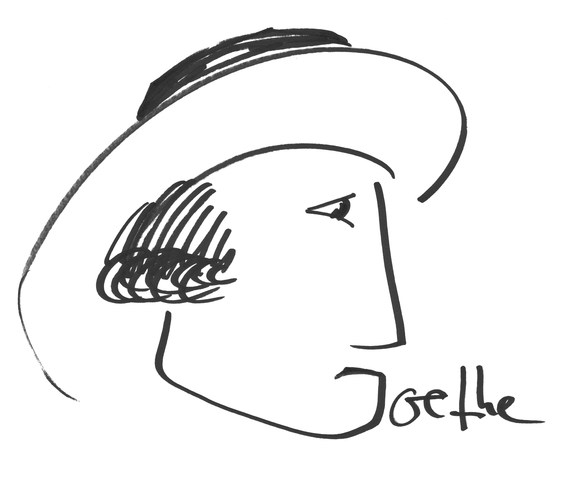

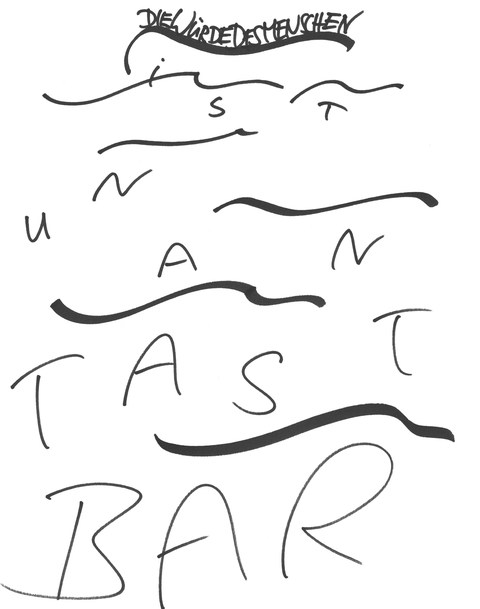
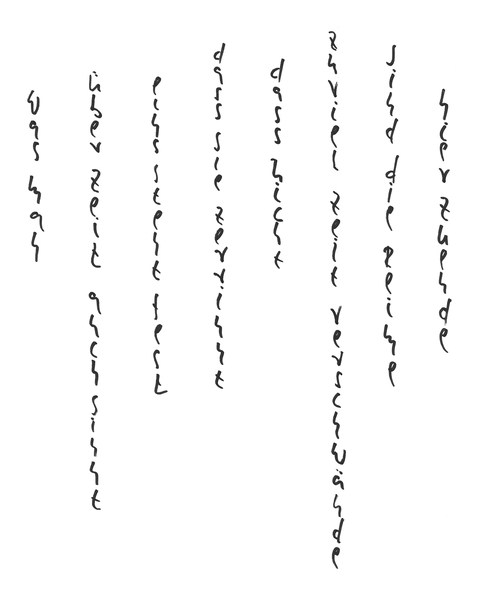
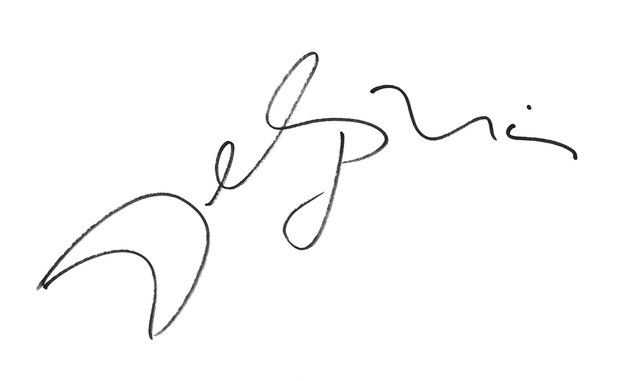
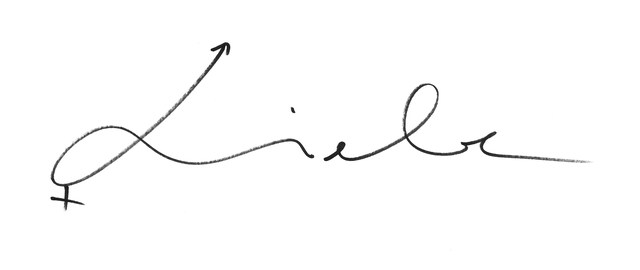
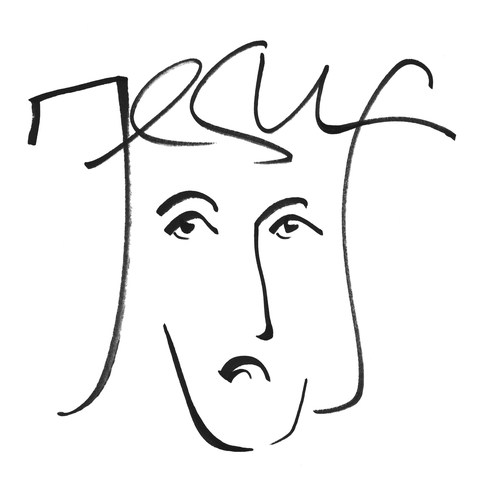
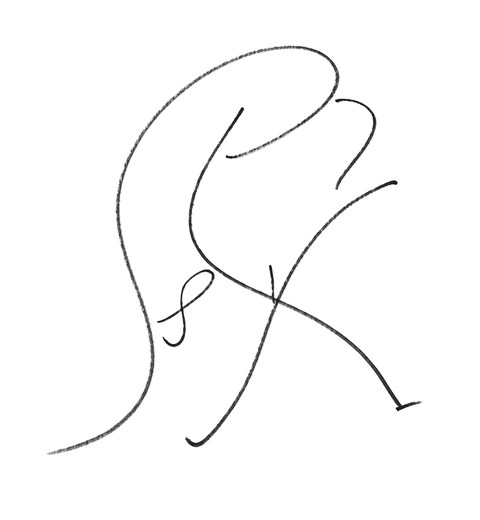

… [Trackback]
[…] Find More to that Topic: between-science-and-art.com/word-art-a-new-art-form/ […]